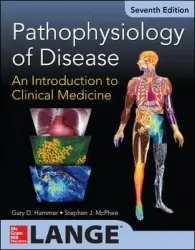Clinical Physiology
Students are expected to attend lectures and obliged to attend seminars. The Department may refuse the acknowledgement of the semester from this subject if a student is absent for more than two seminars. Seminar attendance is recorded electronically during the first 5 minutes of the seminars, thereby late arrivals by 6 or more minutes result in seminar absences. A successful oral ECG test (during the 10th week of the second semester) is also a prerequisite for Clinical Physiology.
Third year students are invited to participate in two written tests ("Assessment of the work" (AW)) during the 9th and 14th weeks organized by the Division of Clinical Physiology. Single choice test questions (single right or single false answers should be chosen from five possibilities) will be asked to assess students' proficiency. Bonus points can be collected for the 9th week written exam to be included into the result of the pre-final (14th week exam) and final tests (during examination period). 20 questions covering the materials of lectures and seminars between 1-9 weeks will be asked on the 9th week written self control.
Students reaching higher than passing limits will be offered by a recommended grade following the 14th week self control. This pre-final exam will contain 50 questions where the entire curriculum of Clinical Physiology will be included. The Division cannot ensure opportunities for the inspection of the corrections of the above self controls on a personal basis, nevertheless test questions can be discussed after the tests during independent events organized for all students at the same time. Students are expected to arrange this event where a minimum of 40 students should participate and to contact the academic advisor for technical support.
If a final grade cannot be recommended, written exams will be performed during the examination period. First exams and first repeated exams are in written, while the second repeated exam is in an oral. In addition students can register for an oral improvement provided they exceeded the passing limit of any written tests. There is not a special topic list for oral improvement exam, oral ECG analysis and all the materials of seminars and lectures are asked.
 |
Recommended literature Product details
Description: A full-color, case-based review of the essentials of pathophysiology, covering all major organs and systems. The goal of this trusted text is to introduce you to clinical medicine by reviewing the pathophysiologic basis of 120 diseases (and associated signs and symptoms) commonly encountered in medical practice. The authors, all experts in their respective fields, have provided a concise review of relevant normal structure and function of each body system, followed by a description of the pathophysiologic mechanisms that underlie several common diseases related to that system. Each chapter of Pathophysiology of Disease concludes with a collection of case studies and questionsdesigned to test your understanding of the pathophysiology of each clinical entity discussed. These case studies allow you to apply your knowledge to specific clinical situations. Detailed answers to each case study question are provided at the end of the book. This unique interweaving of physiological and pathological concepts will put you on the path toward thinking about signs and symptoms in terms of their pathophysiologic basis, giving you an understanding of the "why" behind illness and treatment. Features: 120 case studies (9 new) provide an opportunity for you to test your understanding of the pathophysiology of each clinical entity discussed |